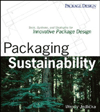2024 Packaging Industry Outlook
Labels’ Expanding Roles Include Brand Protection, Supporting Sustainability

When brand owners choose product packaging, they are sending a message about their company to their customers. They must ensure the value of their brand comes across clearly in the appearance and functionality of the packaging design. As a central component of the packaging design process in consumer segments, a product’s label must not only effectively capture the essence of the brand, but additionally serve to differentiate a company’s products on the retail shelf.
In non-consumer segments like industrials, durables and chemicals, label resilience and functionality are paramount given the physical and environmental conditions these products must withstand to help ensure they reach their destination safely. Customized, small batch, and special edition packaging can help products stand out on store shelves.
Printed packaging buyer preferences, combined with increasing material and recycling considerations and legislation impacting the entire value chain, have also driven sustainability to the forefront of packaging design priorities. In a global survey by Euromonitor International, 74% of corporations reported that they are facing government and regulatory pressure to make climate-conscious business decisions. As companies seek, and as consumers demand them, to become more transparent about operations and emissions, information about their packaging materials and where they are sourced is an important aspect of establishing accountability.
Brands often rely on label converters to consider these factors and bring their visions, and company values, to life. Converters are working hard to balance brand priorities with efficient production practices, creating labeling solutions that work for multiple types of printing technologies and maintain high levels of performance. In 2024, suppliers and converters will be exploring substrates and methods to meet brand and consumer demands regarding sustainability, technology and digitalization.
Supplier and Converter Collaboration
To help label converters solve unique problems, suppliers are exploring alternative materials that offer a range of benefits over traditional label substrates. Conventional paper labels provide crisp text and graphics but are not tamper resistant and require additional steps to be used in wet applications. Synthetic papers and printable plastics are more resilient, but many require special inks or coatings and can have performance limitations based on which printing processes are employed.
With these concerns in mind, suppliers like PPG are working with converters to help them meet their customers’ needs, reduce complexity and increase productivity. Leveraging their experience in materials and coatings, PPG has adapted their TESLIN® synthetic paper for labels and packaging applications. TESLIN® substrate accommodates a wide variety of conventional and digital printing methods including flexo, inkjet, toner-based, laser and thermal transfer. It can handle different converting methods and finishing requirements, allowing converters to offer flexible design options without stocking large amounts of varied substrate inventory, all while providing durability, strong bonds, easy application and high-quality printing.
Embracing Technological Innovation
The rise of digital will continue to touch every aspect of the packaging industry, from digital presses to e-commerce to hiring practices. Customized and variable labels are easier to produce with digital printing, and smart packaging can help brands connect with consumers who have bought their products and want to learn more about them. Converters can take advantage of the low-waste and quick turnaround times possible with digital printing to stay competitive for brands who may have unpredictable demand and smaller, custom print orders.
While variable bar codes may be a high priority for one brand owner, labeling needs can vary greatly by industry. Suppliers and converters can develop useful innovations and help brands adopt new technology by gaining a thorough understanding of their needs. For example, a chemical company may need their labels to be static dissipative to help prevent the risk of fires, while a high-end winery may be more focused on designing a high-definition label that accurately portrays their brand image and enhances shelf appeal while incorporating track and trace and authentication functionality to help thwart counterfeiting and fraud. Offering an alternative material or synthetic option to what a brand has used historically can open new doors for their product packaging.
Achieving Sustainability Goals
Along with digital, sustainability is also transforming the packaging landscape. Brands are pressuring converters for more sustainable options as they seek to lessen their environmental impact across the value chain and meet ambitious Environmental, Social, and Governance (ESG) goals in the face of material bans, extended producer responsibility (EPR) legislation, and recycling mandates. This often means ensuring consistent color integrity and overall label functionality, while also supporting sustainability goals.
To communicate their sustainability efforts to consumers, more brands are participating in standardized ESG methodologies like the Science-Based Target Initiative (SBTi) and Greenhouse Gas Protocol accounting standards. Reducing greenhouse gas emissions and raw material usage are influential ways that sustainable packaging can reduce a brand’s carbon footprint. This helps companies reduce their scope 3 emissions, which are the indirect upstream and downstream emissions that occur in a company’s value chain.
2024 Outlook
New technology will influence the labeling industry throughout 2024. From digital presses, to automation, to new substrates, converters and suppliers will benefit from working together to develop solutions that improve upon and transform existing processes. Streamlining operations will help converters manage the challenges of fluctuating demand and material prices while still delivering cutting-edge solutions to their customers. Consumers will continue to push brands for sustainable packaging, and label converters can provide meaningful contributions to companies’ ESG efforts by improving their own sustainability efforts and practices.
Check out these other 2024 Outlook stories focusing on flexible packaging and temperature-controlled shipping.
Looking for a reprint of this article?
From high-res PDFs to custom plaques, order your copy today!










